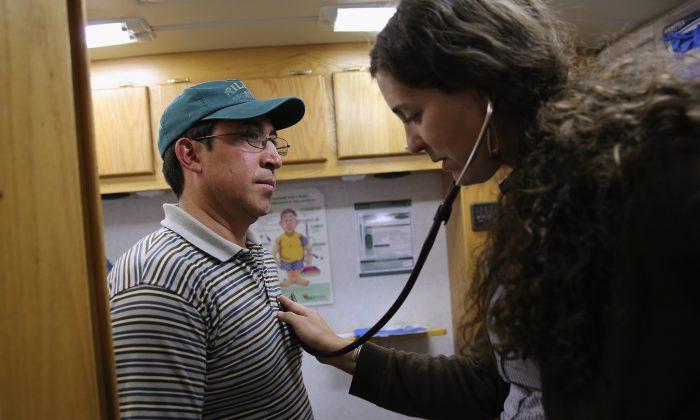NEW YORK—People don’t shop around for urgent medical care. They stumble upon it, feeling queasy walking down the street one day or having just taken a fall.
Ironically, emergency rooms are so bogged down by minor acute cases that it sometimes takes hours for a simple injury to be seen. A 2012 Centers for Disease Control report found that from 2003 through 2009, the mean wait time in U.S. emergency departments increased 25 percent, from 46.5 minutes to 58.1 minutes, due in part to increased emergency department visits.
Growth is anticipated to be even higher when the Affordable Care Act goes into effect in 2014, effectively extending health care coverage to another 30 million Americans.
“The idea of urgent care [clinics] is very common in places like Arizona and Florida,” said MedRite owner Samuel Fisch. “For some reason New York is very behind in picking it up. … This is the sort of thing that New York City should have.”
Walk-in clinics have a best-of-both-worlds advantage. They are like an emergency room that a patient can walk into without an appointment and like primary care for people without a regular physician. Extended evening and weekend hours are common. And follow-up is a standout quality of such clinics.
“We can do what the ER can’t do, which is bring patients back until they are better,” said Dr. Douglas Kaiden, MedRite’s medical director. “We do a lot of physicals, pre-employment, and school physicals. Even if they are not sick, they can still come to us with a primary care issue that needs to be taken care of. That’s something an ER definitely would not do.”
A small staff allows urgent care clinics the flexibility not afforded to hospitals with higher levels of bureaucracy.
Kaiden said MedRite always has a board certified emergency doctor and X-ray technician on hand, as well as a second physician and several medical assistants. MedRite, currently located near the United Nations on Second Avenue, is adding a second location in late May serving the Port Authority area on West 42nd Street.
Currently, south of St. Luke’s near Columbus Circle, there are no emergency rooms on the West Side. “It’s a busy area and underserved in this field,” said Kaiden, citing the recent closing of St. Vincent’s in Greenwich Village.
Which conditions require a trip to the emergency room? And which can be treated at an urgent care center?
Urgent care centers treat conditions that are not life-threatening emergencies but require attention within 24 hours, while medical problems that are life-threatening warrant an immediate call to 911 and a visit to the ER.
Urgent Care or ER: Where to Go?
Conditions treatable at an urgent care center:
• Accidents and falls
• Sprains and broken bones
• Back problems
• Breathing difficulties
• Severe abdominal pain
• Bleeding/cuts—not bleeding a lot but requiring stitches
• High fever
• Vomiting, diarrhea, or dehydration
• Severe sore throat or cough
• Mild to moderate asthma
Common situations requiring emergency room care:
• Difficulty in breathing
• Unconsciousness
• Severe bleeding
• Poisoning
• Chest pain or pressure
• Moderate to severe burns
• Convulsions or seizures
• Serious head, neck, or back injury
• Loss of limb or severe broken bone
Source: Palo Alto Medical Foundation







Friends Read Free